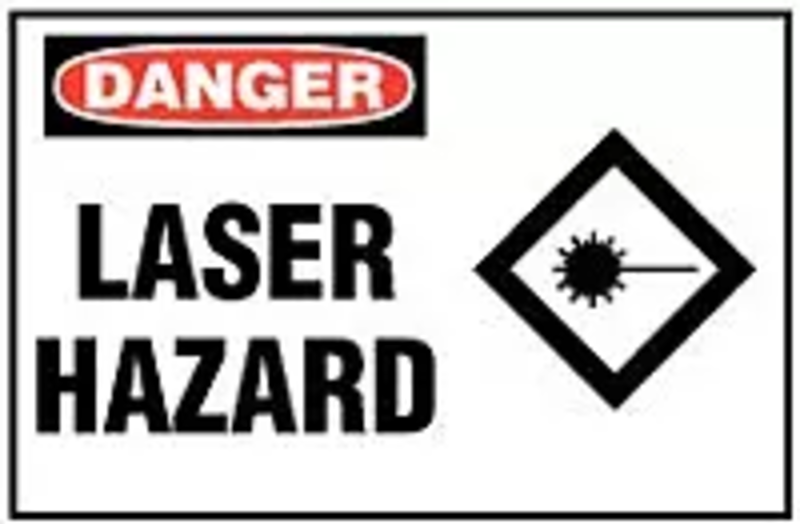Radiation and Laser Safety

Lasers have
many applications these days. They are often used in scanners and detectors,
night vision optics, medical applications and industry. However, radiation
exposure from lasers can pose a serious health risk and it
does exist in many items that we come in contact with on a regular basis, such
as microwave ovens and cellphones.
People are vulnerable to radiation exposure
through X-ray machines and cancer treatments. Radiation treatment facilities
also exist across the United States where the energy is stored and harnessed
for use by both the public and the government. Because of the many safety
hazards that are associated with radiation exposure, such as health problems and even
death, you need to be able to recognize radiation safety issues and how to
prevent exposure.
Laser and
radiation exposure can have e biological effect as well. These biological effects of laser radiation overexposure are the action of visible, ultraviolet (UV), or infrared radiation upon
tissues. Generally, lasers in the UV region induce photochemical reactions. Lasers in the infrared region, however, induce thermal effects. Damage occurs when a
laser beam encounters tissue, depending on the combined characteristics of both
the incident laser beam and the properties of the tissue involved.
Radioactive
materials can sometimes have leaks which can lead to health and safety risks
for the surrounding population. Radioactive materials, especially liquids, can
seep into the ground, causing the local soil and water table to become
poisonous to living things and thus unusable. Anyone who eats something grown
in radioactive material or who drinks tainted water can become extremely ill,
develop a prolonged illness or, in some cases, die. As a result, local
government and the federal Environmental Protection Agency regulate and monitor
these facilities very closely and hold facilities accountable for every unit of
radioactive material that passes through them.
Direct exposure to radioactive materials can cause several health problems even
though radiation treatments are used to treat other health problems such as
cancer. Radiation exposure can cause tumors, cancer and even birth defects in
babies exposed while in the womb. Anyone at risk for radiation exposure should
avoid the source if possible to prevent radiation poisoning.
Likewise,
laser light radiation can permanently damage your eyes. It is critical that the
correct safety goggles are available to employees. Different lasers operate at
different wavelengths and strengths. Safety goggles must be labeled with the
wavelength and optical density they are designed to protect against. Employers
must ensure that all operators, maintenance and repair personnel wear their
goggles at all times when around lasers.
Safety signs
can help you identify radiation and laser hazards. You can inform workers and visitors
about areas in your facility that has either radiation or lasers present
through these signs. They also alert employees of the dangers that result from
direct exposure of radiation or lasers.
Most of these signs include a message warning of laser radiation.
Idesco Safety
provides a wide selection of radiation and laser signs that are compliant with
OSHA’s safety standards. OSHA recognizes the importance of posting high quality
safety signs in all hazardous and unsafe areas of a work environment. These
safety signs are intended to indicate the potential, type, and degree of the
hazard that may lead to accidental injury and property damage.